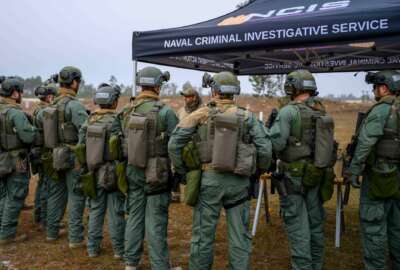Prosecutors, investigators, defense attorneys and inspectors general all need evidence-based data. Fortunately, recent advances in information technology are changing how investigators gather and use data.
For David Case, deputy inspector general at the Department of Veterans Affairs, investigations have long been a mix of sifting through documents and machine-generated data, and talking to individuals directly. Over the years, the ratio has shifted to be more data heavy.
“Now, there’s still the critical importance of interviews, both of people involved, and those who are responsible for the data at VA,” Case said on Federal Monthly Insights – Special Bulletin: Digital Investigations. “But more and more that data can help us direct our resources intelligently and can help us reach conclusions that we have confidence in.”
His office oversees the audit group, which examines issues within the Veterans Health Administration, the Veterans Benefit Administration and other aspects of VA operations. The OIG also oversees health care inspections of VA health facilities, national reviews, criminal investigations and even a special investigations group, which takes a cross-discipline effort.
At some point, though, Case must ask himself the question, when does he have enough data and information to draw conclusions? He said it’s a two-step process.
“One is as you focus on what subject or area or particular hospital or part of VA you’re going to look at, you use the data to see if there’s really a ‘there’ there, so to speak,” Case said on Federal Drive with Tom Temin. “And in doing that you have to combine your data scientists to tell you what the data is showing, to show outliers, with subject matter experts here at the IG. You then need to complete and have a feeling that you have the total picture of all the data that can be relevant.”
From there, the data help to reach conclusions, which are tested. Documents and interviews – “multiple legs of the stool” – should reveal those same conclusions as well, he said.
One challenge to this process is coordinating personnel. Case said investigators must ensure data scientists and data analysts are communicating with the subject matter experts directly charged with oversight. Those experts include investigators, clinicians and auditors. It is imperative everyone has a complete and clear understanding of the information or data needed, he said.
“More commonly, though, investigators or auditors will want some sort of dashboard, where they can see outliers in the data at particular points in time,” he said. “And then we found particularly useful a visual display over time, so you can see trends and the outliers appear more dramatically.”
Geospatial platforms are also useful for displaying the data across the country. Investigators can compare facilities in different geographic areas, and they can compare facilities by complexity.
Next is an iterative testing process to compare information from multiple sources.
“For instance, it seems straightforward but there’s several sources to tell us about the date of death of a veteran. And so we can look and compare that,” Case said. “We look and see if certain data elements might be missing, and if they are, we’ll go back to the custodians of the data within VA to talk to them about it. And then we can look, sometimes comparing VA data to – I’ll call it civilian data or data in the community, let’s say – certain operations of the hospital and how that’s conducted. And finally, during this process, we’re not only looking at the data, but we’re interviewing the custodians of the data at VA, to see if they have ideas where it might be incomplete, and those who use the data in VA, and get their views on it.”
As the OIG reaches conclusions and drafts reports, staff begin a Q&A process, which he emphasized requires a skeptical mindset and documentation of all answers.
“And they’ll ask, ‘Show me, display me your record as to where this came from. Display for me how you obtained this, what was the process? Can it be replicated? Could someone else come in and do the exact same process and get the same information?’” he said. “And so by doing all those things, we try to make sure we have a complete set of data, and that the inferences we draw from that data, and from interviews, and from our own experience reach a conclusion that’s defensible, and certainly justified by the evidence that we have.”
Copyright
© 2024 Federal News Network. All rights reserved. This website is not intended for users located within the European Economic Area.




